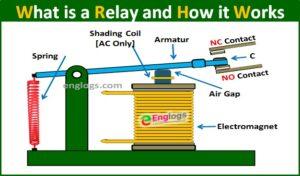Electromagnetic Relay:
These relays are constructed from electrical, mechanical and magnetic components, and possess operating coil and mechanical contacts. Therefore, when a coil gets activated by a power supply source, these mechanical contacts get opened or closed. The type of supply can be AC or DC.
Types of an Electromagnetic Relay:
By their working principle, the electromagnetic relay is mainly classified into two types. These are:
- Attraction Type Electromagnetic Relays
- Induction Type Electromagnetic Relays
Attraction Type Electromagnetic Relays:
These relays can work with both AC and DC supply and attract a metal bar or a piece of metal when power is supplied to the coil. This can be a plunger being drawn towards the solenoid or an armature being attracted towards the poles of an electromagnet, as shown in the figure. These relays don’t have any time delays, so these are used for instantaneous operation.
These can be typed like
- Attracted Armature Relay
- Solenoid Type Relay
- Balanced Beam Relay
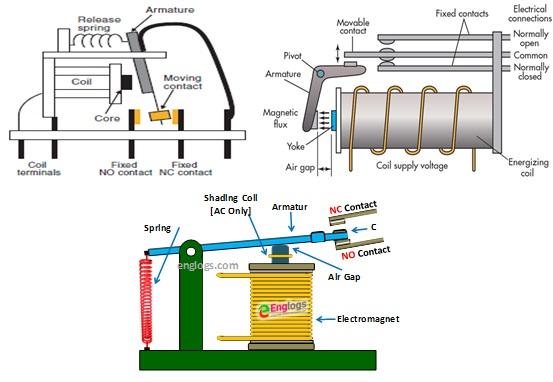
Induction Type Electromagnetic Relays:
These are used as protective relays in AC systems alone and are unusable with DC systems.The actuating force of contacts, movement is developed by a moving conductor that may be a disc or a cup, through the interaction of electromagnetic fluxes due to fault currents.
These are of several types like:
- Shaded Pole Type Relays
- Watt-hour Meter Type Relays
- Induction Cup Structure Relays
Shaded Pole Type Relays:
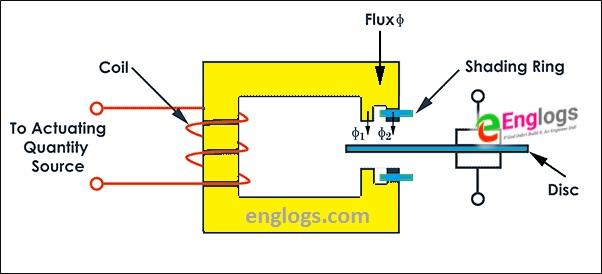
Shaded pole relay consists of aluminum disc, which is pivoted such that it freely rotates in the air gap of an electromagnet. Shaded ring or copper ring is surrounded on one half of each pole. The induced currents in this shaded ring produce another flux called as shaded flux, which lags behind the flux produced by the unshaded pole by some angle. The phase difference between these two fluxes produces necessary torque to rotate the disc.
Watt-hour Meter Type Relays:
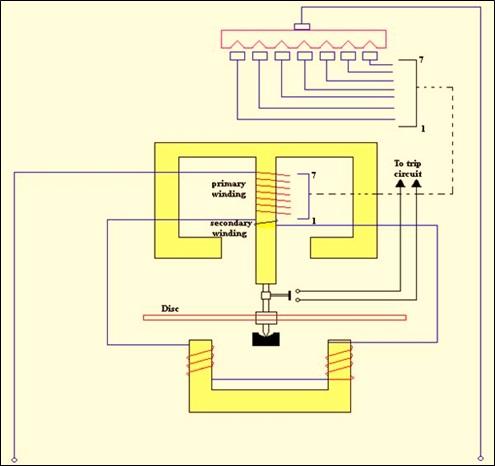
The Watt-hour structure type relay works as an electromagnetic induction type of watthour – a meter so named, after it. It consists of two magnets, upper and lower electromagnets and aluminium disc, which is pivoted such that it rotates freely between the two electromagnets. In this relay, the upper magnet consists of two windings: primary and secondary windings, wherein the primary winding carries the relay current and the secondary winding is connected to the lower magnet. This primary current induces EMF in the secondary winding, so it produces a flux that lags behind the main flux by some angle. The phase difference of these fluxes produces torque on the disc, whose magnitude is proportional to the product of these two fluxes multiplied by the sine angle between these two fluxes.
Induction Cup Structure Relays:
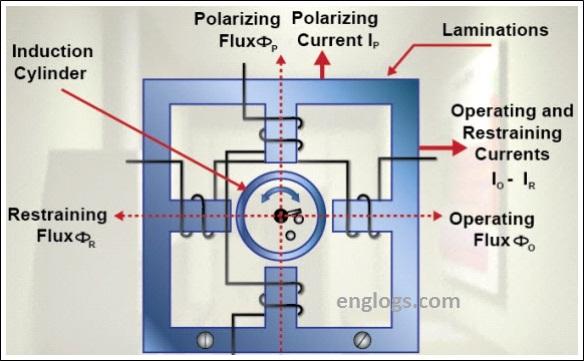
The induction cup structure relay works on similar principle of an induction disc relay. This relay can be four pole or eight pole depending on the number of windings accommodated. Due to the replacement of the disc with an aluminum cup, the inertia of the rotating system is significantly reduced. In this type of relay, the rotating magnetic field is produced by one pair of poles inducing a current in the aluminum cup.
In this relay, the cup movement or torque is produced by the interaction of fields produced by the two pair of poles (as shown in the below figure) that have lagged one another with some angle. In the normal operating conditions, the cup remains standstill, but, in case of any fault, a very high current in the coil causes to move the cup so that the circuit gets isolated from the power supply.



